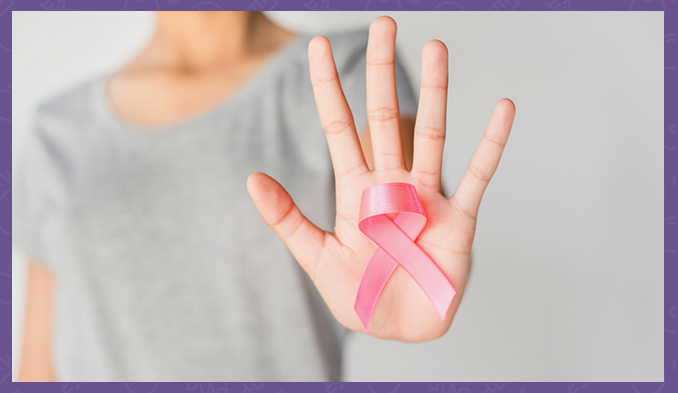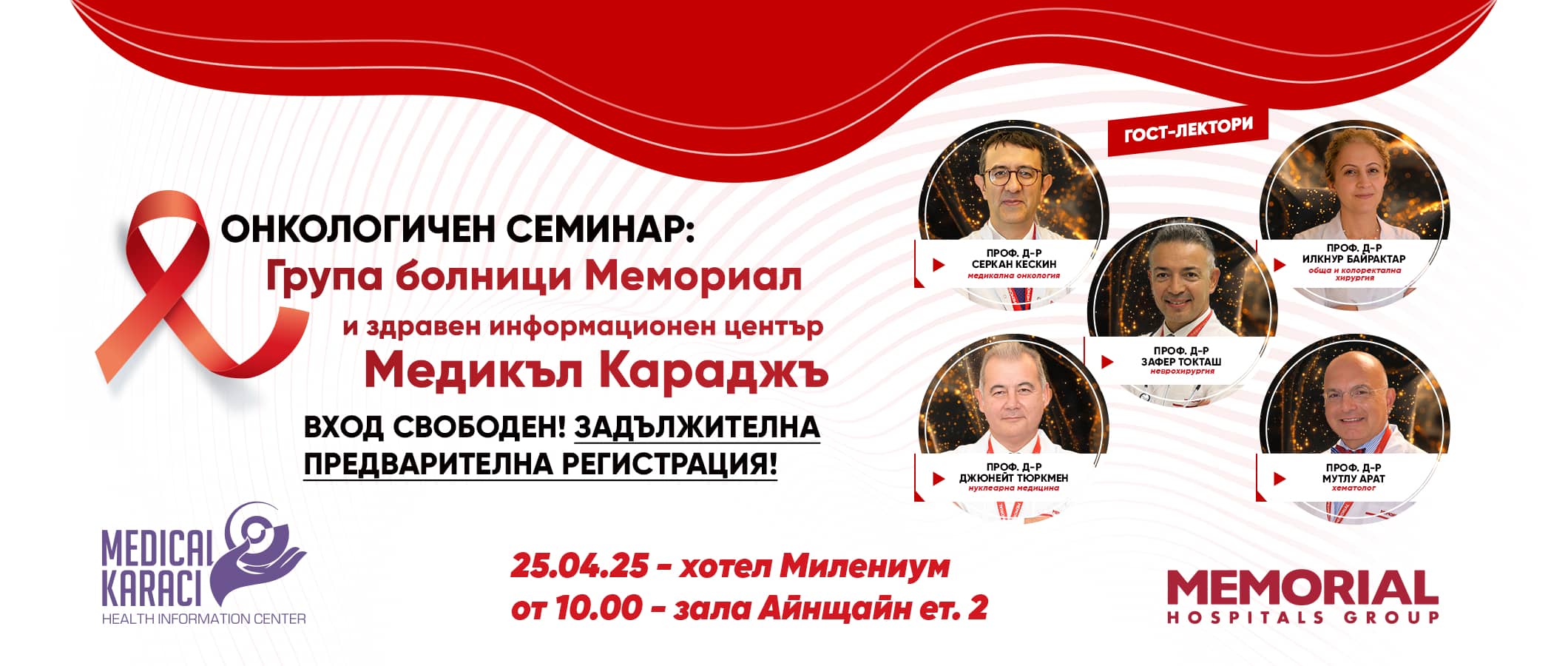Breast cancer is the most common cancer among women worldwide. It is estimated that one in eight women is at risk of developing breast cancer in her lifetime. It has been proven that a healthy lifestyle, prevention and early diagnosis allow a large percentage of women to overcome the disease.
The causes of breast cancer are unknown, but there are risk factors that need to be assessed on an individual basis. Regular check-ups with a mammologist should be done to monitor any changes.
Imaging studies map formations that cannot be detected by palpation.
The most common risk factors that can lead to breast cancer are:
- Age - the possibility of developing breast cancer increases with age. The disease is seen more often in women over 50;
- Family burden - i.e. the presence of such a disease in a mother, grandmother, sister, daughter;
- In genetic changes associated with the production of BRCA1 and BRCA2 protein;
- When proven cancer in one breast, the likelihood of cancer in the other breast is high;
- When you weren't giving birth women or in the late birth of the first child;
- In early onset of first menstruation or late onset of menopause
- Lifestyle - Various factors in everyday life can contribute to the formation of cancer of any kind, one of them being being being overweight. Postmenopausal women who are overweight or have a rounder build are at greater risk of breast cancer. Physical activity reduces the risk of developing malignancy as well as the chance of the disease recurring (coming back) after treatment has already been carried out. Daily exercise can protect women from breast cancer by helping them maintain a healthy weight, reducing hormone levels in the body or causing changes in their metabolism and immune system.
Alcohol is another key factor in everyday life. Drinking more than 1-2 glasses of alcohol (beer, wine and spirits) a day increases the risk of breast cancer, as well as the risk of the disease recurring (coming back) after undergoing treatment.
Breast cancer prevention
Although there is no proven way to completely prevent this disease, you can minimize your risk of getting it.
- Mastectomy - Women with BRCA1 or BRCA2, genetic mutations that significantly increase their risk for breast cancer, may want to consider the preventive removal of both breasts. The procedure is called prophylactic mastectomy and reduces the risk of developing 95% breast cancer.
- Chemoprevention - Women at increased risk for breast cancer may decide to have chemoprevention. This is a therapy that uses drugs that block the production of certain hormones in the body in order to reduce the risk of cancer.
- Aromatase inhibitors are another group of drugs that lower the risk of breast cancer. They block the formation of estrogen in organs and tissues other than the ovaries, and so reduce the amount of the hormone in the female body.
- Improve lifestyle - One way to reduce your risk of breast cancer is regular physical activity. Moderate to vigorous exercise for 30 to 60 minutes each day is recommended. Other ways are maintaining a healthy body weight, limiting alcohol intake, and avoiding postmenopausal hormone therapy to mitigate the symptoms of this specific period. Breastfeeding is another option to reduce the risk of breast cancer.
The most common symptoms of breast cancer are:
Often, we don't pay attention to some important symptoms or we ignore the small changes that we have accidentally detected. See your doctor whenever you find:
- Lump or deformity of your breast
- Lump in the armpit area
- Leakage of discharge from the nipple of the breast
- Nipple deformation
- Changes in breast skin colour and appearance
Unfortunately, the first symptoms of breast cancer often go unnoticed. When the tumor is still small and located deep in the breast tissue, it cannot be palpated and does not cause pain or discomfort. This is why mammography is used worldwide for the early diagnosis of breast cancer.
During routine gynecological examinations or when the patient approaches a doctor because of the manifestation of a certain symptom, the doctor draws up a history and performs a physical examination.
Based on this information, the doctor assesses the need to conduct additional diagnostic studies.
- Medical history - This consists of an interview in which the doctor obtains information about the presence of family and personal burdens, the patient's habits and other health problems.
- Physical Examination - A physical examination of the breast is performed to detect changes in texture, the presence of lumps, enlarged lymph nodes in the axillary or supraclavicular fossae, and to assess the condition of the skin and nipple.
Doctors use different tests to diagnose a carcinoma. The most common tests used to diagnose breast cancer are:
- Blood and urine tests - Includes a complete blood count to determine the condition of the blood cells, kidney and liver biochemistry to ascertain kidney and liver function, and determination of the calcium ion level. The presence of proteins called tumor markers can also be determined.
- Imaging - Mammography - Mammography is the most effective method for early detection of malignant breast tumors. A special X-ray is taken of the breast with a special machine called a mammograph. With a relatively low dose of radiation, many problems are detected, especially breast cancer, including at very early stages of development. This is the most common method of diagnosing breast disease. Mammography is the only certified method in the world for breast cancer screening. With its help, small lesions that cannot be palpated by hand can be visualized.
The examination is simple and painless, although it can sometimes be uncomfortable as it is necessary to apply pressure to the breast for better image quality. In order for each breast area to be examined, two projections of each breast are usually made. There are some limitations with mammography, especially in younger women, as their breasts usually have denser glandular tissue. In this case, it is supplemented with ultrasonography. It is very important to compare the image from the last mammogram with the results of previous mammograms, which is why you should bring previous X-rays. Mammography makes it possible to see a number of signs that indicate with sufficient accuracy whether the lesion is suspicious for malignancy or not. - Biopsy - A biopsy is the taking of a small piece of tissue. Other tests can show that there is an existing neoplasm, but only a biopsy can specify what it is and make a diagnosis. After the biopsy is done, a doctor pathologist analyzes the tissue samples.
- Genomic tests for breast cancer - These are tests that look at the biology of the tumour in even more detail. They calculate the risk of disease recurrence years after diagnosis.
Genomebreast -
A screening test that helps a patient find out what his or her risk of hereditary breast and ovarian cancer is. This test analyzes 26 genes (including the BRCA 1 & 2 genes) associated with a high risk of developing breast cancer, ovarian cancer and other hereditary cancers. The test results enable the development of personalized medical care plans specifically targeted to reduce cancer risk.
Oncotype Dx -
This test isolates 16 cancer-related genes and 5 reference genes to calculate the risk of cancer returning in the next 10 years after diagnosis. Usually this test is done in women at stages I and II. The results are mainly used to aid in the decision whether or not to include chemotherapy to a patient's endocrine therapy.
Breast Cancer Index -
This test may be useful in determining the duration of endocrine (hormone) therapy in a patient.
MammaPrint -
This test uses information from 70 genes to predict the risk of recurrence in early-detected, low-risk breast cancer. It can also predict whether chemotherapy will be effective.
PAM50 (Prosigna) -
This study uses information from 50 genes to predict whether the cancer will metastasize.
Often, early diagnosis of cancer increases the chances of a complete cure many times over. In their early stages, malignancies rarely have prominent warning signs. Therefore, be proactive and responsible with your health. Be sure to do this:
- Visit your doctor regularly for a check-up!
Your doctor can detect early-stage cancer during a standard physical examination even if you have no symptoms. Ask your doctor for information on assessing your individual risk for malignancy, what changes and symptoms to watch for, and an appropriate schedule for regular preventive checkups.
Prophylactic examinations are carried out in women without complaints. The purpose of prevention is to monitor the condition of the mammary glands and detect the presence of an alteration in a timely manner. As a prophylactic method in women with no family history, it is recommended that the first mammograms be performed after the age of 35. However, for ladies with a family history, prophylactic mammography should begin around the age of 30.
For women up to 35 years of age who have no complaints and no family history, ultrasonography (ultrasound examination of the mammary glands) is recommended. The examination is more suitable for this age group as it does not use X-rays and allows imaging of the dense young breasts. - Just get regular check-ups!
There are a number of visible signs that can help you detect the first symptoms of cancer. Have yourself a breast examination once a month. This will give you a detailed view of your own body and make it easier to spot changes. Share with your doctor anything you feel is unnatural. - Consult your doctor when choosing contraceptives!
If you have a family history of breast cancer, you should discuss with your doctor your risk of breast cancer and the relationship with hormonal contraceptives and hormone replacement therapy. - Consult your doctor before deciding on cosmetic breast correction!
For more information, we at Medical Karaj are at your service.
Call us on the following numbers "Medical Karaj": 0879 977 401 or 0879 977 402.
Also keep an eye on our constantly updated Facebook content.









